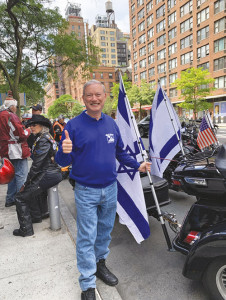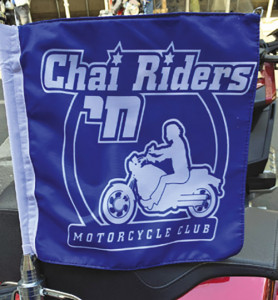
In this week’s parsha of Beha’aloscha, we are reminded that the tribes of Israel journeyed by banner—each having their own symbolic flag (10:13). Sefer Bamidbar begins by recounting the moment when the Israelites were counted and organized into tribes as they prepared to embark on their journey to the promised land. Each tribe had its own unique banner, representing its individual identity and contributing to the collective tapestry of the Israelite nation.
The Celebrate Israel parade—an annual event that brings Jews from around the world together in solidarity and celebration—took place this past Sunday. It provided us with an opportunity to reflect on the significance of these tribal banners and their relevance to our lives today. The parade was noteworthy, in that Fifth Avenue was awash with Israeli flags in all shapes and sizes.
Rashi explained that each tribe had their own banner and distinctive insignias. Each tribal flag was the same color as its stone on the Kohen Gadol’s (high priest’s) breastplate.

The midrash goes into even more detail: Reuben’s flag was red and its insignia was the “dudaim—flowers.” Simon’s was green with an embroidered representation of the city of Shechem. Levi’s was white, black and red with an embroidered urim v’tumim. Judah’s was sky blue with a lion. Issacher’s was blue-black with a sun and a moon. Zebulun’s was white with a ship. Dan’s was sapphire with a snake. Gad’s was gray with a battalion of soldiers. Naftali’s was pale red with a doe. Asher’s was olive green with an olive tree. Ehraim’s was black with an ox. Menasheh’s was black with a horned animal. Benjamin’s was a composite color with a wolf.
The banners of the 12 tribes of Israel were not mere symbols; they held profound meaning and conveyed essential aspects of the tribe’s character and purpose. Each banner carried a distinct color, emblem and motto—representing the tribe’s values and strengths. When we examine the banners closely, we find a connection to the diversity and unity that was celebrated during the Celebrate Israel parade.
Moreover, just as the Israelites encamped around the Tabernacle—with each tribe positioned according to their banner—the Celebrate Israel parade gathered Jews from all walks of life, bringing them together under the shared values and aspirations of our heritage. It served as a powerful reminder that we are part of a greater whole—a global Jewish community that is diverse yet interconnected; each of us contributing our unique colors and symbols to the tapestry of Jewish history.
Once again, I was proud to lead the Chai Riders Motorcycle Club as we rode up Fifth Avenue, honking our horns and revving our motors. This delighted the crowds and was a point of gratification. As a Jewish motorcycle club, the Chai Riders demonstrate strength, skill and pride in their Jewish heritage. Our motorcyclists came from the tri-state area as well as diverse points. Motorcycle license plates were seen from Florida, Connecticut and Maryland. Wendy and David Hefter, representing their Chabad community in Pikesville, Maryland, for example, drove their Harley three-wheeler into the city via Philadelphia just to participate in the parade. The Zisman family from Crown Heights had three brothers riding separately in the parade. They all had Israeli flags attached to their motorcycles.

For Jews who have a deep attachment to Israel, seeing the flag can stir up feelings of joy, unity and a sense of belonging to a larger Jewish collective. It represents the fulfillment of the Zionist dream, the establishment of a homeland for the Jewish people and the resilience and survival of the Jewish nation.
Many Jews see the flag as a representation of Jewish self-determination and the right to sovereignty. It embodies the hope for peace and security for the Jewish people, particularly in a world that has witnessed historical persecution and antisemitism. For those who have personal or ancestral ties to Israel, the flag may evoke a deep emotional connection to their heritage and ancestral homeland.
The tribal banners of Israel and the Celebrate Israel parade are interconnected in their celebration of diversity and unity. As we marched proudly in the parade—waving our flags high—we can reflect on the profound message conveyed by these ancient symbols. Let us embrace our individual strengths and unique contributions while recognizing our shared heritage, celebrating the rich tapestry of Jewish life and striving for unity as we march forward together towards a bright and promising future.
Rabbi Dr. Avi Kuperberg is a forensic, clinical psychologist and a member of the American Psychology-Law Society. He is the coordinator of Bikur Cholim/Chesed at Congregation Torah Ohr in Boca Raton, Florida. He can be reached at [email protected].














